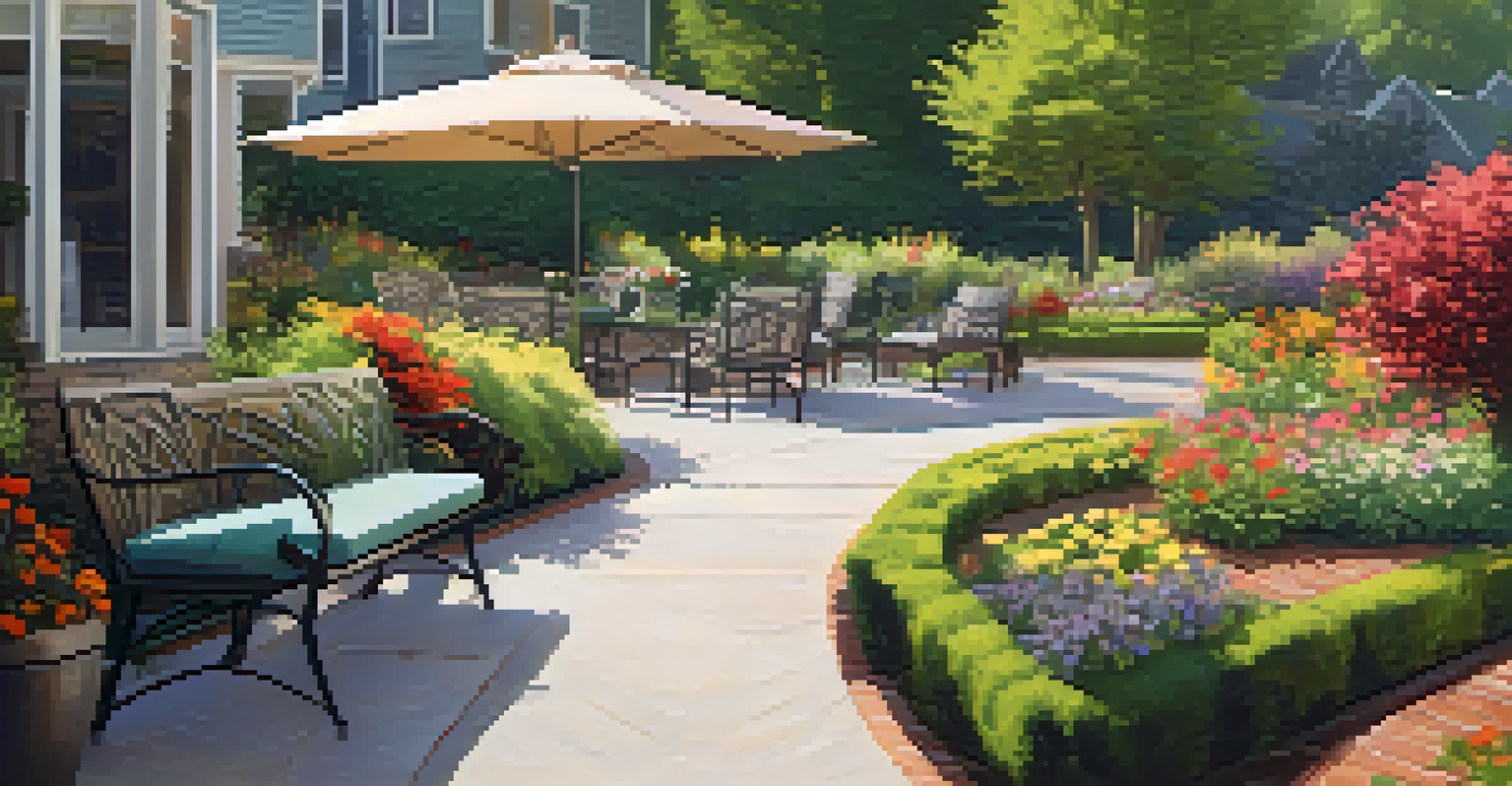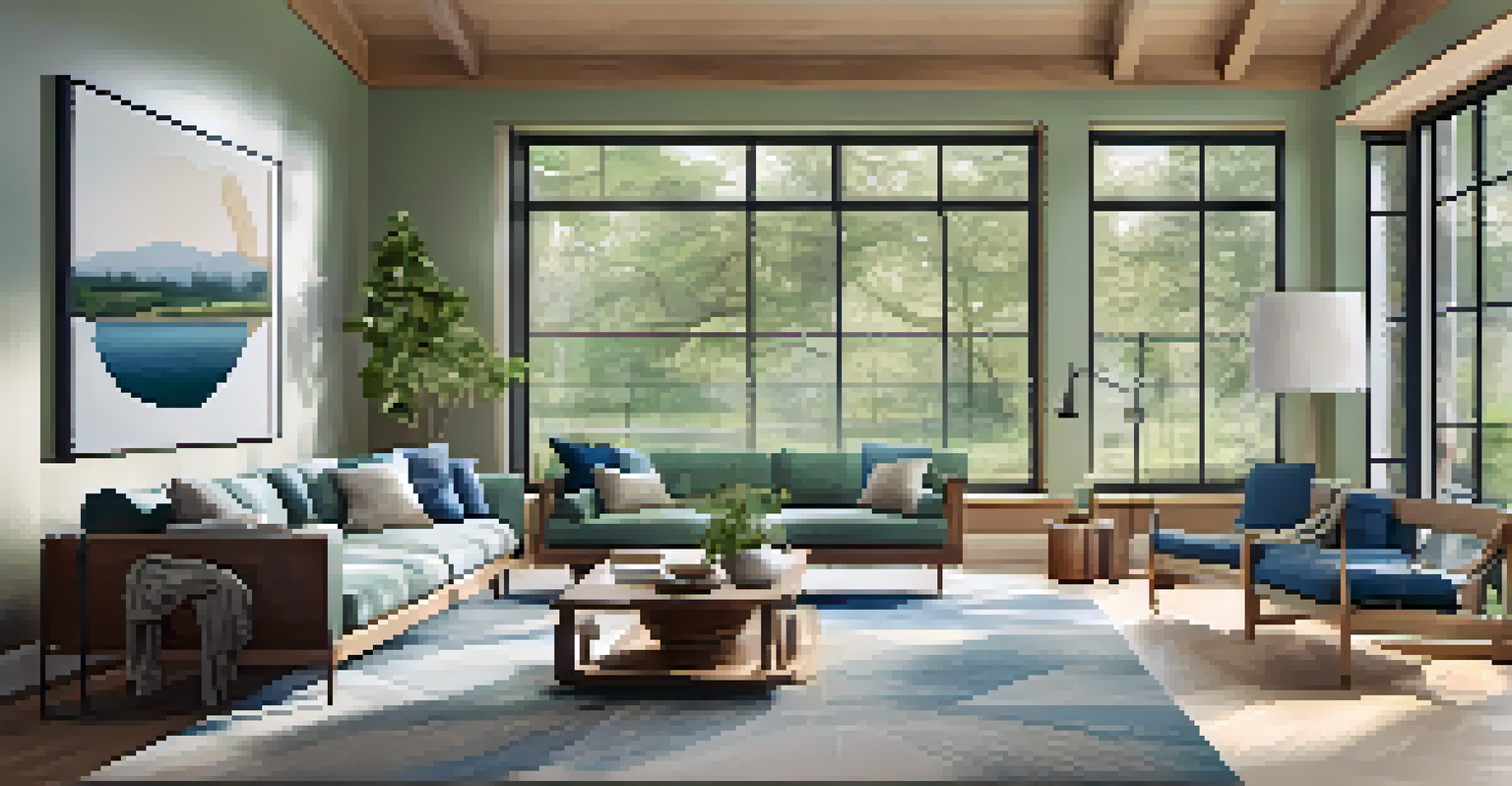How to Incorporate Nature in Accessible Home Design

Understanding Accessible Home Design Principles
Accessible home design focuses on creating spaces that everyone can navigate comfortably, regardless of their physical abilities. This means considering features like wider doorways, lower countertops, and strategic lighting. The goal is to foster independence and ease of movement, making homes welcoming for all individuals, including those with disabilities.
Design is not just what it looks like and feels like. Design is how it works.
One key principle is universal design, which aims to create environments that are usable by all people to the greatest extent possible. This approach not only benefits individuals with disabilities but also enhances the experience for everyone. For instance, a ramp at the entrance can be a stylish feature that also serves as a practical solution for wheelchair users.
Incorporating nature into this framework can elevate the aesthetic and functional quality of a space, making it not only accessible but also a joy to live in. By blending these two concepts, you can create a home that is both inviting and inclusive.
The Benefits of Biophilic Design
Biophilic design is the practice of integrating natural elements into architecture and interiors. This can include anything from large windows that let in natural light to indoor plants that improve air quality and aesthetics. The idea is that connecting with nature can significantly enhance our well-being and productivity.

Research shows that exposure to nature can reduce stress, increase creativity, and even boost mood. For example, a home office with a view of a garden can provide a calming backdrop, making remote work feel less isolating. By incorporating biophilic elements into accessible design, we can create spaces that nurture both the body and the mind.
Embrace Accessible Home Design
Accessible home design creates inclusive spaces for everyone, focusing on features that enhance mobility and independence.
Additionally, biophilic design supports sustainability, often using natural materials and promoting energy efficiency. This means that your home can be not only beautiful and accessible but also environmentally friendly.
Creating Outdoor Spaces for Everyone
Outdoor spaces are essential for a well-rounded home design. They can serve as areas for relaxation, recreation, and socialization. When designing these spaces, accessibility should be a top priority, ensuring that everyone can enjoy them, regardless of their abilities.
The best way to predict the future is to create it.
Consider pathways that are smooth and wide enough for wheelchairs or walkers, and create seating areas that accommodate people of different heights. Features like raised garden beds can allow individuals with mobility challenges to participate in gardening, fostering a connection with nature. These thoughtful touches can make outdoor spaces genuinely inclusive.
Additionally, incorporating natural elements like trees, shrubs, and flowers can enhance the sensory experience of outdoor areas. The sights, sounds, and smells of nature can create a tranquil environment where everyone feels welcome.
Using Natural Materials in Interior Design
Natural materials such as wood, stone, and bamboo can add warmth and beauty to your home while being accessible. These materials often have tactile qualities that enhance the sensory experience of a space. For instance, wide plank wooden floors can be both visually appealing and easier to navigate than traditional tile flooring.
Incorporating elements like non-slip stone tiles in bathrooms or kitchens can ensure safety without sacrificing style. Furthermore, using natural finishes and paints can contribute to healthier indoor air quality, which is particularly important for individuals with respiratory issues.
Biophilic Design Enhances Well-Being
Integrating natural elements in design not only beautifies spaces but also boosts mood, reduces stress, and promotes sustainability.
By prioritizing natural materials, you create a home that feels grounded and connected to the environment. This connection not only beautifies the space but also makes it more inviting for everyone.
Incorporating Natural Light for Accessibility
Natural light is a crucial aspect of both accessibility and biophilic design. A well-lit space can improve visibility and reduce the strain on the eyes, making it easier for individuals with visual impairments to navigate. Large windows, skylights, and even glass doors can allow sunlight to flood into your home, creating a warm and inviting atmosphere.
Moreover, natural light has been shown to regulate circadian rhythms, enhancing sleep quality and overall well-being. Think about how you can position windows to maximize sunlight exposure throughout the day, especially in commonly used areas like kitchens and living rooms.
Don't forget about shading options too; sheer curtains or adjustable blinds can help control light levels while still maintaining a connection to the outdoors. This balance fosters an environment that is both accessible and comfortable.
Incorporating Nature-Inspired Color Palettes
Colors play a significant role in how we feel in a space. Nature-inspired color palettes—think soft greens, earthy browns, and tranquil blues—can create a calming atmosphere that promotes relaxation and well-being. These colors can be incorporated into walls, furniture, and decor, making spaces feel more connected to the natural world.
When designing for accessibility, consider how color contrast can aid navigation. For example, using contrasting colors for stair railings or door frames can help visually impaired individuals identify boundaries and navigate spaces safely. This approach brings a functional aspect to the beauty of natural colors.
Nature-Inspired Art and Decor
Using nature-themed art and decor fosters a calming atmosphere while making homes more inviting and reflective of the local environment.
By thoughtfully selecting colors that reflect nature, you not only enhance the aesthetic appeal of your home but also create an environment that is easier to navigate for everyone.
Integrating Nature Through Art and Decor
Art and decor are fantastic ways to bring nature into your home, especially in accessible design. Consider artwork that showcases natural landscapes or botanical themes, which can evoke a sense of calm and connection to the outdoors. These pieces can be strategically placed in areas where they can easily be viewed by everyone.
Additionally, decorative elements like nature-inspired textiles or sculptures can enhance the overall ambiance. Think about using cushions with floral patterns or arranging a stone sculpture in a way that is easy to access for all visitors. This not only beautifies your home but also makes it feel more inviting.

Don't shy away from involving the community too; consider showcasing local artists who focus on nature themes. This creates a sense of connection to the local environment and fosters a sense of belonging, making your home a true reflection of both nature and accessibility.